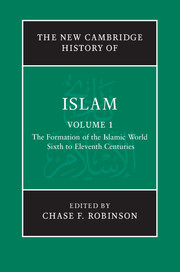Introduction
Published online by Cambridge University Press: 28 March 2011
Summary
The following story, which appears in the History of Abū Jaʿfar al-Ṭabarī (d. 310/923), is one of many that describe how the ʿAbbāsid caliph Abū Jaʿfar al-Manṣūr (r. 136–58/754–75) chose the site for his new city of Baghdad. The event is said to have taken place in year 763 of the Common Era, some thirteen years after the revolution that brought the ʿAbbāsids to power.
It was reported on the authority of Muḥammad b. Ṣāliḥ b. al-Naṭṭāḥ, on the authority of Muḥammad b. Jābir and his father, who said: When Abū Jaʿfar decided to build the city of Baghdad, he saw a monk, to whom he called out. When he responded, he asked him, ‘Do you find in your books [a prediction] that a city will be built here?’ ‘Yes’, said the monk, ‘Miqlāṣ will build it.’ Abū Jaʿfar exclaimed, ‘I was called Miqlāṣ when I was young!’, to which the monk said, ‘Then you must be the one to build it!’
He [the narrator] then continued: Likewise, when Abū Jaʿfar decided to build the city of al-Rāfiqa, which is in territory that once belonged to the Byzantines, the people of [the nearby city of] al-Raqqa objected and resolved to fight him, saying, ‘You will ruin our markets, take away our livelihoods and reduce our houses. Abū Jaqfar was determined to take them on, and wrote to a monk in the [nearby] monastery, asking: ‘Do you know anything about a city that will be built here?’ The monk replied, ‘I have heard that a man called Miqlās. will build it,’ so Abu Jaqfar said, ‘I am Miqlās.!’ So he built it on the model of Baghdad, except for the walls, the iron gates and the single ditch.
- Type
- Chapter
- Information
- The New Cambridge History of Islam , pp. 1 - 16Publisher: Cambridge University PressPrint publication year: 2010
References
- 2
- Cited by



